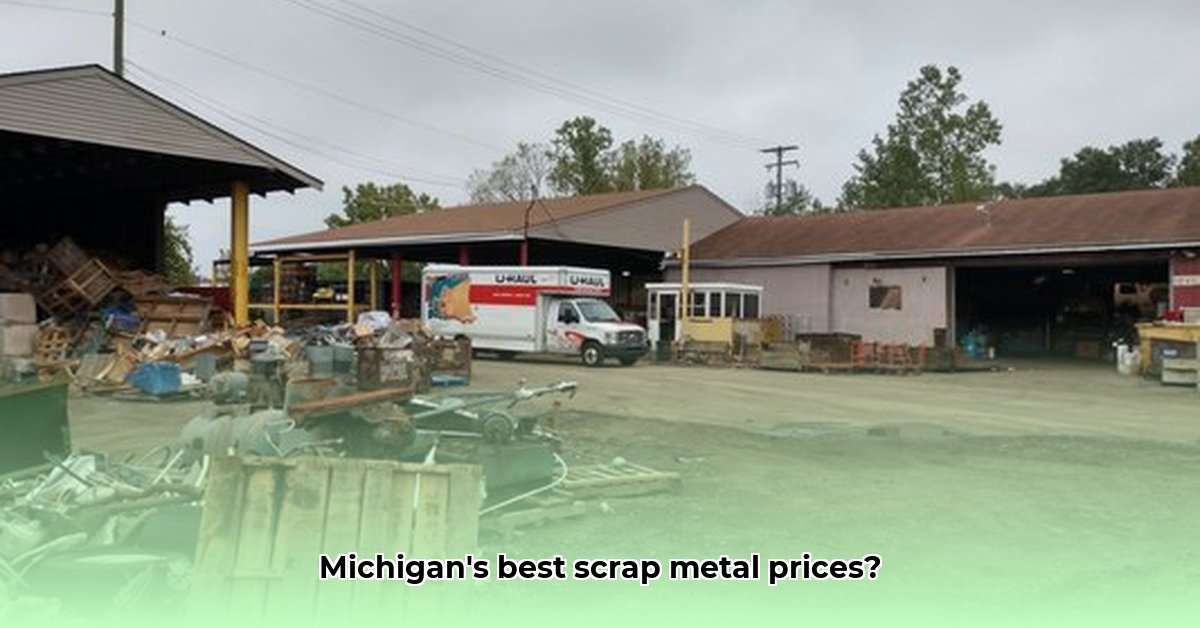
Michigan's Scrap Metal Recycling Landscape
Haggerty Metals is a prominent player in Michigan's dynamic scrap metal recycling industry. Operating for over two decades, the company has established a strong reputation for handling a vast array of materials, from common aluminum cans to specialized secure destruction services for sensitive materials. This article examines Haggerty Metals' business model, market position, and strategic outlook within the broader context of the Michigan and Ohio scrap metal recycling markets. For more examples of successful recycling businesses, see this case study.
Market Overview: Michigan and Ohio Scrap Metal Recycling
The scrap metal recycling market in Michigan and Ohio is characterized by significant demand driven by the robust manufacturing sectors in both states. This creates a competitive landscape with numerous players vying for market share. Regulatory frameworks, including those focused on environmental compliance and responsible waste management, influence operations and pricing. The market is also susceptible to global commodity price volatility, posing a significant challenge for businesses in the industry. How effectively recyclers manage this volatility dictates their long-term success.
Haggerty Metals: A Case Study in Adaptability
Haggerty Metals distinguishes itself through its comprehensive service offerings. Beyond processing common scrap metals such as copper and brass, the company handles a wide variety of materials, catering to both individual consumers and large industrial clients. Their specialization in secure destruction of sensitive materials provides a unique niche, differentiating them from competitors focused solely on traditional recycling. This diversification mitigates the risk associated with fluctuating prices for specific metals. Isn't it intriguing how a company's adaptability can translate into a competitive edge in a volatile market?
Strategic Analysis: Opportunities and Challenges
Haggerty Metals faces both significant opportunities and challenges. Short-term opportunities include refining operational efficiencies, enhancing pricing strategies, and attracting new clients. Long-term growth could involve expanding geographical reach through strategic partnerships or acquisitions, investing in advanced processing technologies to improve efficiency and reduce costs, and deepening relationships with key industrial clients for a more predictable supply stream. However, the risk of metal price fluctuations remains a significant concern.
Risk Assessment Matrix: Mitigating Key Risks
| Risk Factor | Likelihood | Impact | Mitigation Strategy |
|---|---|---|---|
| Metal Price Fluctuations | High | High | Diversify metal types processed; implement hedging strategies |
| Competition | Medium | Medium | Enhance customer service; focus on specialized niche services |
| Regulatory Changes | Medium | Medium | Maintain regulatory compliance; proactively adapt to changes |
| Environmental Concerns | Low | High | Invest in environmentally friendly technologies |
Conclusion: The Importance of Responsible Recycling
Haggerty Metals, and companies like it, play a pivotal role in sustainable economic development and environmental protection. The success of Michigan's scrap metal recycling sector is vital for fostering a circular economy. By effectively managing the challenges and seizing the opportunities presented, companies like Haggerty Metals contribute to a more environmentally responsible and economically vibrant future. The ongoing demand for innovative and efficient recycling solutions ensures the continued relevance of this important sector.